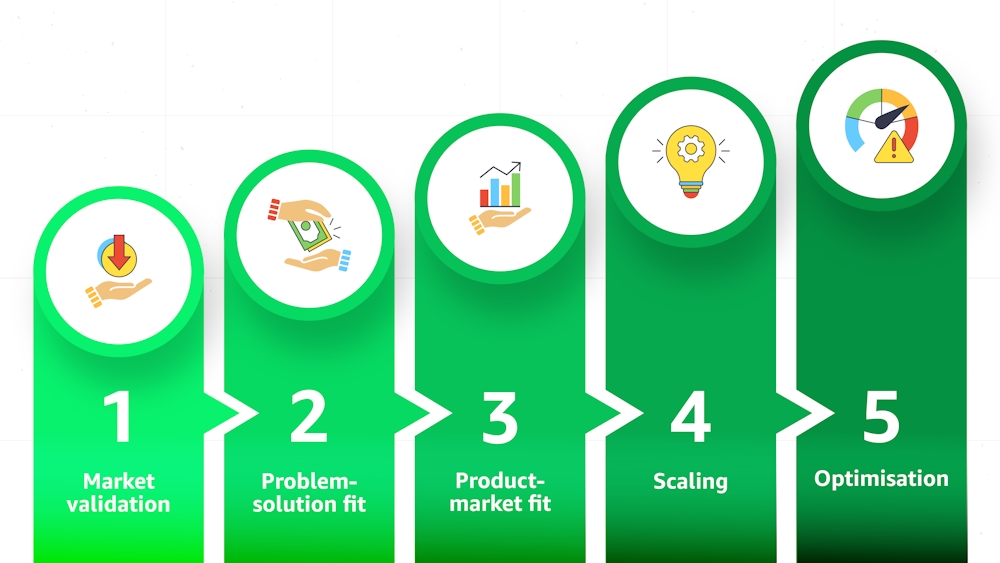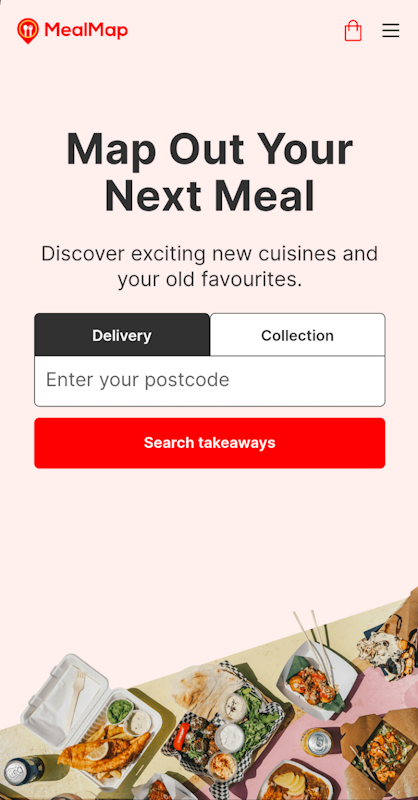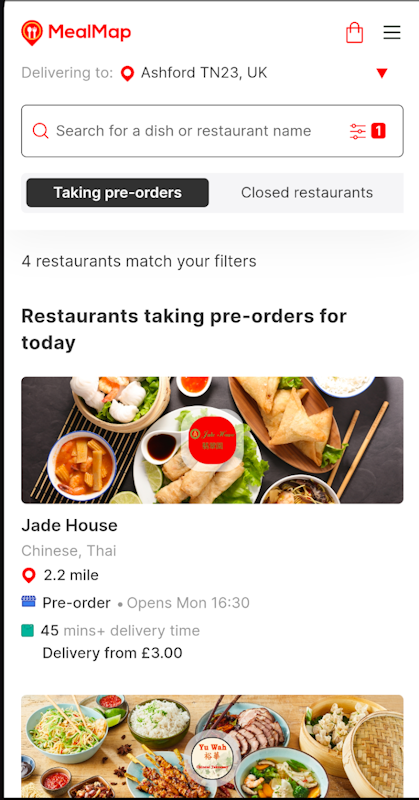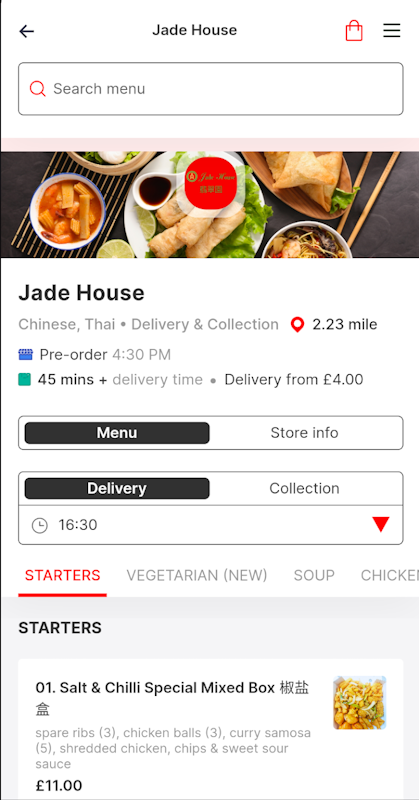So you have an amazing idea for an online marketplace that will revolutionise [insert industry vertical]? Just slap together a website with one of the myriad turnkey solutions out there and voila! Buyers and sellers will stream through your digital doors! Whoa, cowboy, not so fast. Waaaay before building a fully-fledged marketplace platform, you need to validate those assumptions of yours. And then keep validating . . .
One of the biggest red flags when someone approaches us about their marketplace idea is a build-it-and-they-will-come mentality – instead of embracing an iterative process. Many wannabe marketplace entrepreneurs have long lists of features and tech stack demands, despite not having any concrete evidence that buyers and sellers want or need their solution.
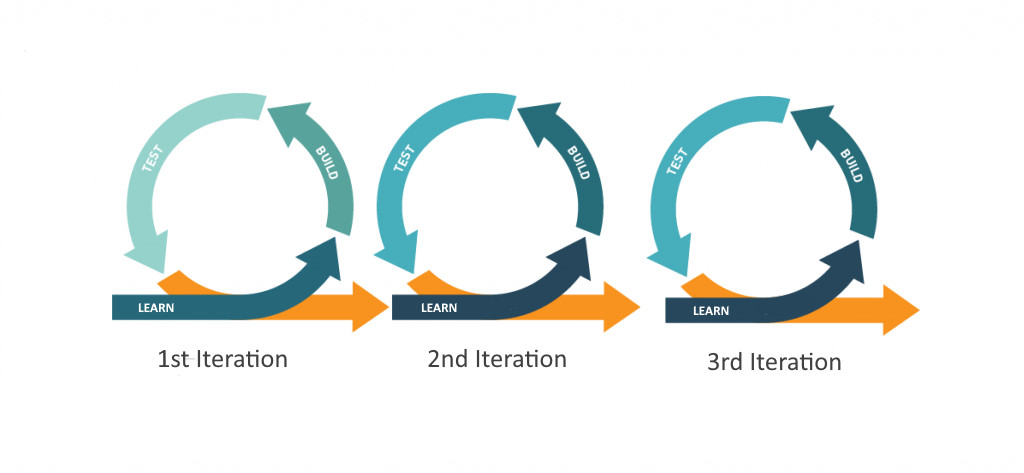
The cold hard reality is that building a successful online marketplace requires an iron-willed dedication to verifying and adjusting your assumptions. It’s equally important to understand that this is not a once-off exercise with static conclusions. There will be a new set of assumptions that need to be validated at each stage of your marketplace’s evolution.
So, before you waste your precious resources on a code factory that promises the earth and the moon, make sure you understand the validation challenges during each business stage of your marketplace startup:
- Validating the market
- Validating problem-solution fit
- Validating product-market fit
- Validating product-channel fit (scaling)
- Managing ongoing risk and opportunities (optimisation)
Stage 1: Validate the market for your marketplace idea
Is there a problem that needs solving?
Who you are:
You may have little top-level (read: deep) experience of the vertical your marketplace concept targets. You haven’t built anything yet. Or you have a badly implemented platform with little or irrelevant traffic.
What you should focus on:
Test if there’s a general need in the market. Do market analysis by gathering data on the competitive landscape, consumer behaviour, popular product categories, and regional trends. Start building user personas based on demographics, behaviour patterns, pain points and communication preferences.
Tools for market validation
- Industry publications
Analyse reports and white papers to understand industry trends, calculate your total addressable market, and evaluate developing cohorts.
- Keyword research
Analyse commonly used search terms used on platforms like Google or Amazon to see if there is (1) demand for your concept and (2) which competitors are targeting those keywords.
- Surveys
Targeted surveys (small groups based on ideal user personas) can illuminate (1) user needs, (2) issues with existing solutions, and (3) demand for features and functionality that solve user needs better.
- Business Model Canvas
It’s a good idea to outline your key business assumptions right from the start, even if you don’t have enough information yet. You will be updating them in any case as your marketplace idea progresses through the next phases.
The Business Model Canvas provides a high-level framework for the building blocks of your business: customer segments, pain points, acquisition channels, revenue streams, value propositions, and unique selling points. Its succinct format provides a clear snapshot of how the core elements of your marketplace idea fit together, making it easier to iterate on ideas and adjust strategy.
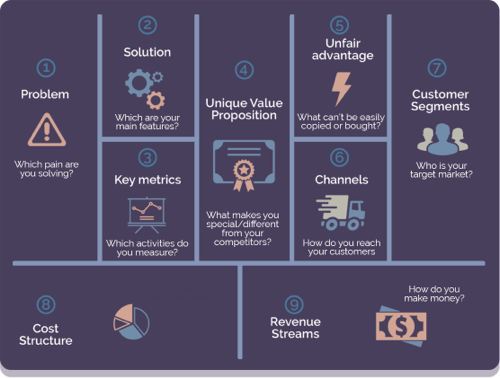
Example of market validation for a marketplace idea
Carbon-offset exchange, Switch2Zero, built their first version based on the founders’ fintech background combined with extensive market analysis and user surveys. Their key focus was to ascertain to what extent individuals and businesses were looking for ways to reduce their carbon footprints and in the case of companies, comply with carbon offset regulations.

Stage 2: Validate problem-solution fit for your marketplace
Will people pay for your solution?
Who you are:
You’ve established that there’s a need in the market and done some user research. You may have experimented with a basic platform (e.g. off-the-shelf templates or a simple landing page), but still struggle with user acquisition and/or engagement. This means you can’t test how well you are solving user needs, since not enough users engage with the platform to evaluate its performance.
What you should focus on:
Test the degree to which your product solves a specific need for a small well-defined customer segment. Focus on the simplest problem that users would be willing to pay to have solved. Don’t forget, this requires relevant – not huge volumes of – traffic and engagement.
The resultant feedback should also be used to refine user personas and your target market.
Common focuses here: How are your target audience currently solving their problems and how does your solution solve it better?
Tools for problem-solution fit in marketplaces

Use a low-fidelity MVP to:
- Map out primary user journeys. This is a user’s key touchpoints with the platform in order to accomplish a high-level goal. For example, how does a buyer select, compare, order and pay for an item?
- Design and build basic user funnels. They describe the granular practical steps required to accomplish a user journey via a user interface. For instance, what happens when a checkout button is clicked?
- Define engagement metrics.Common examples are the activation rate (% of visitors that complete an action on the platform, such as listing a product or making a booking) or the search-to-fill rate (% of demand requests successfully matched with supply).
- Drive targeted user traffic with SEO, PPC, email invites, or even physical outreach. This can be done with a small budget and often involves activities that don’t scale well.
- Gain user insights and establish the level of user interest.
💡 This exercise is an important part of the product discovery process.

Examples of problem-solution fit strategies for marketplaces
Service marketplaces like Upwork, TaskRabbit and Thumbtack initially simulated automated workflows (aka ‘Wizard of Oz’ MVPs) to match service providers with customers. When customers interacted with their sites they used behind-the-scenes manual fulfilment to source suitable service providers.
P2P marketplaces like Airbnb, Uber and FanPass ran small-batch manual tests (aka ‘Concierge’ MVPs) to get customer feedback on their offerings.
Event ticketing marketplace, FanPass, had plenty of willing buyers, but few sellers. They solved this chicken-and-egg conundrum by buying tickets from third-party vendors themselves, which they then on-sold to waiting buyers. This acted as a proof of concept for sellers who flocked to the platform when FanPass stopped selling on their behalf.
Airbnb’s infamous landing page simply offered an air mattress in their San Francisco apartment. The smart bit was posting the link on various forums and blogs during a busy conference weekend.
Uber’s first effort (UberCab) was a prototype app that used text and iPhone messaging to directly book luxury black cars in San Francisco. Early access was invite-only and mostly limited to friends and family.

Stage 3: Validate product-market fit for your marketplace
Do you have a viable business model?
Who you are:
You’ve validated interest in your solution among a small target audience. People are engaging with your MVP, but the transaction rate is low. You may have started to generate some revenue, but do not yet have a viable business model.
What you should focus on:
To validate the business and revenue model you need to find out how much users are willing to pay, how they can find and engage with your platform, the best way to transact on the platform, and how you can retain them.
⚠️ At this point it should be noted that your marketplace can be in multiple stages simultaneously based on different product and market segments.
For example, an event ticket marketplace can have product-market fit for sport events, but not necessarily for concerts or festivals. A property platform can have product-market fit among Gen Z renters in London, but struggle to replicate the same among Gen X buyers in Manchester. Each new segment may therefore require a different approach at product level or market level.
Tools for product-market fit in marketplaces

Use a high-fidelity MVP to:
- Test usability. Measure UX/UI design’s impact on user flow and engagement. Monitor core functionalities such as search, find, select, compare, checkout, and shipping. Common metrics: drop-off points, user feedback, sign-ups, ratings and reviews.
- Test and refine the business model. Techniques include user segmentation, product segmentation, and geographical focus.
- Test and refine the revenue model. The AARRR framework can help to define appropriate revenue metrics. For instance, tracking and analysing the cart abandonment rate, customer lifetime value, or churn rate.
- Follow an iterative process. Add, adjust and test features and functionality in an incremental manner. This will reveal which features and/or functionality contribute to product-market fit.
💡 Learn more about measuring Product-Market Fit in marketplaces

Examples of product-market fit strategies for marketplaces
FanPass – an event-ticketing marketplace with tens of millions (£) in revenue – used detailed analysis of user behaviour and traffic acquisition to create special features for specific buyer and seller segments. The improved product-market fit tripled conversion rates and increased revenue hundredfold.
They dug deep into the user experience: How many purchases were impulsive vs planned ahead? Under which conditions were purchases made, e.g. number of days before events? How often did sellers list tickets and which features were the most important to them? Users were segmented based on more than fifty attributes before engaging them with personalised in-app messages, emails and retargeting ads.
They discovered that repeat sellers wanted to be paid faster and sold more tickets with FanPass’s support. Following up with buyers who abandoned carts helped them to remove friction points and create features that turned them into repeat customers. Crucially, they learned that buyers often bought tickets as gifts and were sensitive to seat location.

Stage 4: Validate product-channel fit for your marketplace
Are you focusing on the right strategies to scale your marketplace?
Who you are:
You’ve established enough product-market fit to suggest that you may be onto a viable business model. A significant number of people are willing to pay for your solution and you may even have started making a small profit. However, your platform has not yet achieved long-term profitability and sustainability.
What you should focus on:
Identify and invest in suitable acquisition channels and growth strategies. Make sure that you pay special attention to the on-platform user experience so that your hard-won users don’t disappear. This may even require a complete overhaul of your platform infrastructure.
⚠️ At this stage it may be a good idea to get some help from domain experts. The ability to map functional requirements and technical specifications to business goals and create productive user feedback loops will be key to scaling your platform.
Tools for scaling online marketplaces

🚀 Establish a growth culture
The stronger and faster your Build-Measure-Learn loops, the easier it will be to identify suitable growth strategies and growth hacking opportunities. This goes beyond acquisition – feedback loops can help you identify specific tactics that could have a significant effect on conversions and even new revenue streams.
To achieve that you will need to refine your data pipeline (implementing the right analytical infrastructure and applying smart data segmentation) and identify the right growth metrics, e.g. liquidity, CAC, churn rate, etc.
📢 Leverage data-driven marketing
Blowing your budget on ineffectual marketing campaigns is a common pitfall for marketplace startups. Marketing strategies that worked for other successful marketplaces may not be a good fit for your target audience.
A fit-for-purpose data pipeline can step into the breach to save the day. It is the foundation for the user behaviour analysis and user segmentation that can help you identify optimal marketing channels.
The next step would be to experiment with brand positioning, messaging formats and other platform content to improve user acquisition, engagement and conversions. Once channels and content are in place you can scale with CRM integration and other forms of marketing automation.
💎 Create more value for users
Features that increase the value proposition for users can deepen product-market fit and create defensive moats. Caveat: before spending zillions on fancy features that nobody wants, you will need to – you guessed it – validate some assumptions again.
This is where that data pipeline and user feedback loops will once more reveal their value. Discover where users experience additional pain points or identify opportunities to further differentiate your platform from competitors with innovative tools.
🕸 Ignite network effects
Use data segmentation, especially those related to user demographics, product types, location and pricing tiers, to identify and promote areas that are working well.
Personalised recommendations, low-friction curation tools, interoperability with other platforms, and community building are just some of the ways that marketplace startups have used to increase engagement with their platforms and trigger compounding feedback loops.
💡 Learn more about network effects in marketplaces
.
💸 Minimise platform leakage
The more parts of the transaction flow you own, the less the likelihood of customers transacting off-platform, thus depriving you of platform fees. This can be achieved by:
- removing points of friction
- entrenching trust
- adjusting your revenue model
Friction can be minimised by improving discovery (how easy it is to find the right product or service) and convenience (the speed and efficiency with which buyers and sellers transact). Typically this means optimising the category structure, navigation architecture or payment flows and streamlining fulfillment or procurement processes.
Deepen trust with features such as review tools, seller curation or anti-fraud & compliance technologies. A clear dispute resolution process is an underrated way to build long-lasting trust.
Sometimes the revenue model needs rethinking to prevent disintermediation. Start by asking if there is a good balance between value and cost? For example, making service providers pay subscriptions or listing fees instead of taking commission on each transaction.
Experimenting with pricing tiers can yield good results. Does your freemium model, for example, offer sufficient incentives for users to upgrade to the paid version? Are high-volume sellers and wholesale buyers rewarded with discounts?
Seller pricing strategy is an often overlooked component of a sustainable revenue model. Foster loyalty among sellers by reducing their operational costs, increasing their sales, and maximising their margins. This can be done with features such as cost calculators, automated pricing suggestions, tools for optimising product visibility, or flexible fulfillment options.
High-volume marketplaces that focus on products or services with low differentiation can benefit from a dynamic pricing model. Optimise your sellers’ revenue with a custom algorithm that uses variables such as location, dates and availability to determine prices.
💡 Learn more about platform leakage in marketplaces
Examples of scaling strategies for marketplaces
Creating value
Food delivery app, MealMap, first established product-market fit by manually inviting a few Asian restaurants in selected UK cities to use their off-the-shelf app. This showed them that there was sufficient interest and a willingness to pay for a centralised order and takeaway platform within that niche.
Their next step was to scale by adding more value on both sides of the equation with innovative features that enhanced the user experience. They built an ecosystem of interconnected custom apps: a main portal that runs on custom architecture, a universal admin dashboard, individual Android/iOS apps for each restaurant, and IoT software that connects POS orders with kitchen printers.
The result was a 70% year-on-year increase in revenue. With zero increase in marketing spend, this is a great example of product-led growth. It also demonstrates that in order to scale your marketplace, you often have to overhaul the platform with suitable technology.
Building trust, network effects, reducing friction, and seller pricing
FanPass built a loyal seller base by giving top sellers trusted status, which also comes with faster payouts. These bulk sellers now deliver a significant portion of their revenue.
Conversion rates tripled and churn rates were halved within six months after FanPass implemented personalised recommendations and reduced friction points. Buyers, for instance, are shown events they may be interested in based on their search and purchase history, while dynamic forms make it easier for sellers to list their tickets. The latter was accomplished by pulling in event information from a central database and automatically filling input fields based on the user’s account information.
FanPass also optimised their revenue model by focusing on seller pricing. Recommended pricing for each ticket was built into the listing forms to help sellers make more sales.

Data segmentation for targeted marketing and creating value with productivity tools
Property management platform, Nestify, tracks landlord KPIs such as churn rates, CLV and MRR to identify the most profitable cities and property types. They also embedded a rental income calculator on their main portal to learn more about potential landlord hotspots. The data submitted by prospects are used to identify new cities and suburbs for marketing campaigns. This granular data pipeline was instrumental in Nestify’s expansion across seven countries, including the UK, UAE, Spain, France, Ireland, and Australia.
A custom app for freelance cleaners was integrated with the property management platform to reduce time spent on cleaner management. It includes a Task Manager to set the parameters of cleaning work, auto-generated Shift Allocation based on a bespoke algorithm, a Work Tracker with IoT integration for property access, a Work Report based on property layout, as well as Maintenance alerts. The resultant ten-fold reduction of time spent on cleaner management contributed to a 50% improvement in landlord retention.

Revenue model optimisation, reduced friction, and user engagement
Parking app, MobyPark, optimised the income earned by parking space owners on their platform by implementing a yield management system, similar to what airlines and hotels use, based on variables like location, special offers, duration, discounts, and availability.
Fees are computed in real time based on prioritisation rules for the various variables to prevent conflicts. It includes a highly granular promotion feature that allows administrators to create discounts that only apply to specific locations, dates, users, or volumes.

User friction was reduced in a number of innovative ways after analysing on-platform user behaviour as well as qualitative feedback from parking space owners and drivers:
- A real-time Interactive calendar that filters parking availability by day, week, month or ad hoc.
- To service the high booking turnover, with parking duration sometimes as short as 15 minutes, a robust scalable search infrastructure was built with Elasticsearch, RabbitMQ and AngularJS.
- Dynamic multi-step forms with automated prompts for car park registration,
- A manual override for car park owners to decline or accept bookings
- Driver alerts for new parking availability
- IoT connectivity that gives drivers automated access to car parks

User engagement strategies included customer service features (e.g. booking tracking and an instant messaging system with anti-spam filters), rich profiles (bios, driver ratings, response rates, verified contact details and local area information), as well as revenue tracking for car park owners.
By reducing friction, increasing user engagement, and optimising the revenue model MobyPark quadrupled repeat transactions and increased its revenue ten-fold. The platform scaled so successfully that it was acquired by a leading Dutch parking operator.
Stage 5: Manage risk & opportunity in your marketplace
How are you optimising your marketplace for ongoing success?
Who you are:
Your marketplace is growing at a rapid rate and it looks like you’ve reached the critical sustainability mark. However, with growth comes new types of risk. You will therefore need to come up with ways to pre-empt and manage the various threats to your platform’s profitability.
What you should focus on:
You can only successfully manage risk and opportunity if you first validate where your attention should be focussed. You will need to monitor the right user journeys and technical metrics to mitigate risk and enhance platform performance.
Tools for managing risk and opportunity in marketplaces

🛡️ Preventive measures focuses on monitoring the technical health of the platform and includes the exploration of data to pre-empt issues that may crop up in future.
🛠️ Corrective measures involve tracking and fixing platform errors.
🌱 Evolutive measures aims to identify opportunities for platform optimisation.
Typical marketplace user journeys that should be monitored
- Creating a user account (buying funnel)
- Logging into a user account (buying funnel)
- Checking out as a guest (buying funnel)
- Adding a new delivery address (buying funnel)
- Payment (buying funnel, related to the payment system)
- Un(favourite) products
- Adding an image (product listing funnel)
- Adding a new product (product listing funnel)
- Product search
- Changing order status (shipped, delivered etc.)
Typical marketplace technical metrics that should be tracked
- API requests per second
- Average response time
- Peak response time. Notifications should be implemented to identify peak times.
- Server uptime to ensure the platform is always available for use.
- HTTP server error rate
- Time to last/first byte. If this takes too long the overall file weight (JS, CSS, images) and user location may need to be investigated.
- Thread count measures the number of concurrent server requests at a particular time. This is important, for instance, when multiple customers are trying to buy the same item at the same time. Lagging is usually a sign that the platform infrastructure needs to be scaled further with larger servers etc.
Examples of optimisation strategies for marketplaces
In a market saturated with ticketing platforms, FanPass leveraged the tracking of JavaScript errors (preventitive) and usability metrics (evolutive) to optimise the user experience and become one of the most popular event ticket marketplaces in Europe.
They obsessively track the website loading speed, form submissions, transaction flows, server performance, log-in errors, API errors and payout errors to ensure there are no technical barriers to the listing or purchase of tickets.
On the usability front they paid special attention to how easy it is for users to navigate their platform. Metrics tracked include how long it takes to fill in forms, feature adoption (e.g. interactive venue maps) and interaction with page elements like pay or sell buttons. The insights gained helped them design page layouts with higher conversion rates.
💡 Learn more about risk management in marketplaces
Successful marketplace startups know when to ask for help!
If you made it this far, well done. You are probably serious about building a marketplace. But here’s an uncomfortable truth: the days of slapping together a DIY MVP to validate product-market fit and product-channel fit – like a latter day Jeff Bezos or Brian Chesky – are pretty much over.
That is because of two undermining factors. Firstly, most first-time marketplace entrepreneurs struggle to frame their assumptions. They simply don’t know which questions to ask. And if you don’t know the questions, it is almost impossible to find the right answers.
Secondly, as competition for marketplace customers becomes more intense and consumers demand more value, marketplace startups don’t have the luxury of throwing mud at the wall and hoping some of it will stick. Every day you spend chasing your own tail is a win for your competitors.
It should be clear to even the most cynical would-be marketplace entrepreneur that a product expert with deep domain insights can be invaluable to minimise risk and increase opportunities for success. That expertise should go far beyond a mere tech stack and feature list. Check out this guide on how to select the right software agency for your marketplace project.
